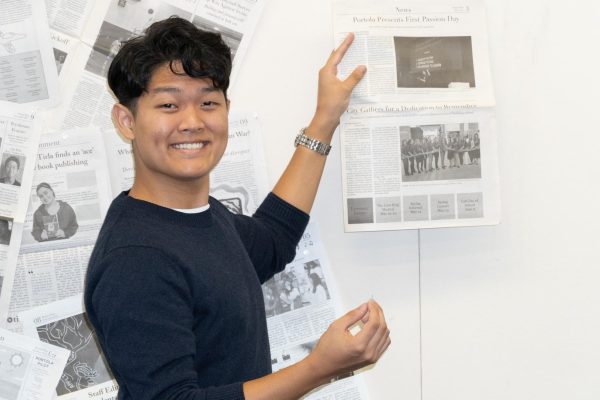Martial Arts Meets Marvel in ‘Shang-Chi and the Legend of the Ten Rings’

Following the release of “Shang-Chi and the Legend of the Ten Rings,” controversy emerged regarding Disney CEO Bob Chapek’s comment. Chapek called the film an experiment due to it being the first franchise title to hit theaters without offering streaming services through Disney+, according to the Atlantic. Actor Simu Liu, who plays Shang-Chi, responded to these comments on Twitter saying, “We are not an experiment. We are the surprise.”
Fast-paced action, high-budget CGI and an overload of corny jokes. While these three variables have come to define Marvel Cinematic Universe films over the past decade, “Shang-Chi and the Legend of the Ten Rings” embraces the tried and true formula to deliver an enjoyable and original—albeit far from perfect— entry into Marvel’s long line of box-office successes.
The film stars Simu Liu as Shang-Chi, who has to reckon with his past as the mystical Ten Rings organization resurfaces.
Aside from the eponymous Marvel superhero, the mostly-Asian cast members further representation in media. Notable examples include Hong Kong action film veteran Tony Leung, portraying the villainous head of the Ten Rings Wenwu, and Awkwafina as Shang-Chi’s comedic-relief best friend, Katy.
Beyond the inclusion of a majority-Asian cast, “Shang-Chi and the Legend of the Ten Rings” seamlessly weaves traditional Chinese martial arts into the story, successfully distinguishing itself from most Marvel films.
The elegant combative scenes not only serve as a spectacle for audiences, but they also represent Shang-Chi’s identity crisis. The swift nature of Tai Chi originates from his mom’s teachings, and the hostile practice of Wing Chan derives from his dad’s mentorship.
The battle scenes are not the only element that integrates aspects of Asian culture into the film. Through the addition of Katy’s Chinese immigrant family, Asian audiences can resonate with the thematic familial values inspired by sacrificial love and collectivist mindset that portrays the standard definition of an Asian family.
While groundbreaking for the Asian representation, the film presents another complex facet that should be celebrated: the portrayal of intersectionality through Chinese feminism. Hollywood has long discouraged the idea of strong-willed Asian female characters by portraying them as submissive and heavily-fetishized, according to Refinery29. Yet Shang-Chi shatters this stereotype by incorporating well-written female characters like Xialing, Shang-Chi’s sister, who builds a reputation for herself as the owner of a fighting ring, despite being excluded from training as a child due to her gender.
Although the characters had great potential, character development is among the few low points of the film. While the first half of the film seems to lay the groundwork for several characters, the majority are not properly utilized. The lack of character build up results with the film being unable to fully sell its emotional moments.
The film’s excessive use of CGI distracts audiences from being able to engage with the plot. A more egregious example is the finale, which takes place in a generic, almost-fully CGI realm that prevents viewers from staying emotionally invested.
Regardless of these flaws, “Shang-Chi and the Legend of the Ten Rings” is undoubtedly exceptional. Its inclusion of a unique blend of graceful fighting scenes, a stellar soundtrack, Chinese thematic elements and an empowering Asian superhero makes this film a must-watch, even if it may not be ten stars—or in this case, ten rings.
Your donation will support the student journalists of Portola High School. Your contribution will allow us to purchase equipment and cover our annual website hosting costs.

Claudia Lin is your co-editor-in-chief for her third year on the Pilot. She is looking forward to making as many memories as possible for her last year...

Tyler Kim is an Editor-in-Chief for his third and final year writing for the Portola Pilot. Besides the production's monthly spreadsheet, you'll be sure...




